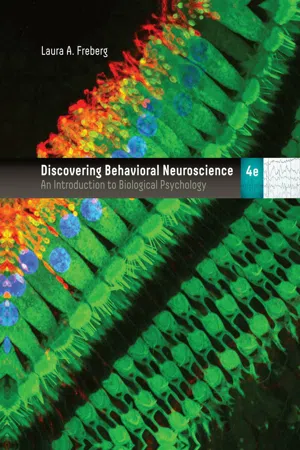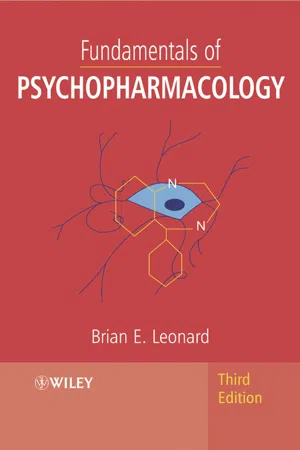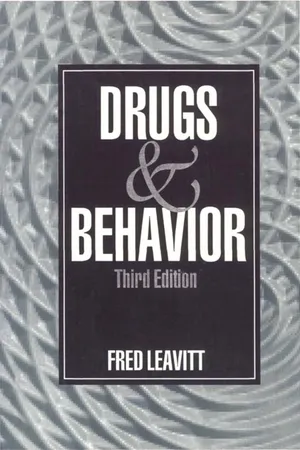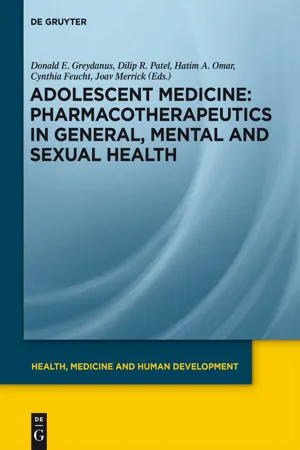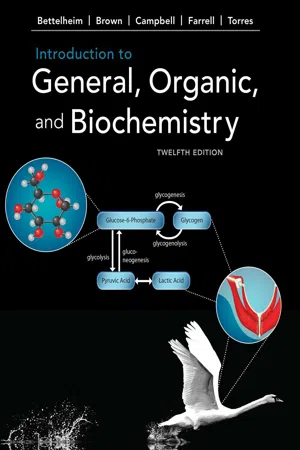Psychology
Neurotransmitters
Neurotransmitters are chemical messengers that transmit signals across the synapses between neurons. They play a crucial role in regulating various physiological and psychological processes, including mood, memory, and behavior. Imbalances in neurotransmitter levels have been linked to various mental health conditions, making them a key focus in understanding and treating psychological disorders.
Written by Perlego with AI-assistance
Related key terms
1 of 5
10 Key excerpts on "Neurotransmitters"
- eBook - ePub
Brain, Attachment, Personality
An Introduction to Neuroaffective Development
- Susan Hart(Author)
- 2018(Publication Date)
- Routledge(Publisher)
In the general debate, the Neurotransmitters are most commonly mentioned in connection with psychoactive medication (for example Prozac, Ritalin, etc.), and much research in the pharmaceutical industry is aimed at influencing and regulating affective conditions by chemical means. To anyone outside the health professions, the explanations can be almost impossible to grasp, and in this chapter I attempt to describe the most common Neurotransmitters in a way that, I hope, will make this knowledge somewhat more accessible and offer some insight into the ways that affective states are influenced by the distribution of biochemical substances.Neurotransmitters, peptides, and hormones act as chemical substances throughout the brain and are transmitted through neuronal synapses (see Figures 3.5 and 3.6 ). The neurochemicals are vastly important to practically all the processes that take place within the organism. In relation to affects, these substances affect our moods, motivation, attention functions, etc. All Neurotransmitters, peptides, and hormones have a synaptic language that transmits specific types of electric or chemical messages; some types inhibit, while others induce, certain tendencies in psychological behaviour. Most neurons contain different types of molecules, which means that they can be activated by different Neurotransmitters. However, each neuron has one primary neurotransmitter. Neurotransmitters are neurochemicals that are released from neurons in the brainstem and released in the synapses. Hormones are neurochemicals that are transported via the bloodstream and released from the adrenocortical glands, the hypothalamus, the pituitary gland, the sexual organs, and other sources. Typically, they do not respond as quickly as the Neurotransmitters. Peptides are made from amino acids and may function both as Neurotransmitters and as hormones. Their function is to intensify and to modulate the effect of the Neurotransmitters (Table 9.1 - eBook - PDF
Discovering Behavioral Neuroscience
An Introduction to Biological Psychology
- Laura Freberg(Author)
- 2018(Publication Date)
- Cengage Learning EMEA(Publisher)
All Rights Reserved. May not be copied, scanned, or duplicated, in whole or in part. Due to electronic rights, some third party content may be suppressed from the eBook and/or eChapter(s). Editorial review has deemed that any suppressed content does not materially affect the overall learning experience. Cengage Learning reserves the right to remove additional content at any time if subsequent rights restrictions require it. CHAPTER 4 Psychopharmacology 108 Neurotransmitters, Neuromodulators, and Neurohormones Neurochemicals fall into three general categories: Neurotransmitters, neuromodula-tors, and neurohormones. Many of the same chemicals take on these different roles depending on the mode of their release and the type of receptors with which they interact. Scientists still disagree on the boundaries of these definitions, with some still preferring to use the term neurotransmitter in all cases. As we mentioned in Chapter 3, chemical synapses can use wiring or volume trans-mission. As shown in ● Figure 4.1, Neurotransmitters engage in wiring transmission by acting on neurons in their own immediate vicinity, generally at a synapse. Neuro-transmitters are typically released from an axon terminal and cross the synaptic gap. On the postsynaptic membrane, ion channels open when molecules of neurotrans-mitter interact with either very fast ionotropic or somewhat slower metabotropic channels. At ionotropic receptors, the neurotransmitter performs rapid communication on a scale of milliseconds. At metabotropic receptors, neurotransmitter effects might last as many as several hours. Neuromodulators are engaged in volume transmission, and differ from classical Neurotransmitters in several ways. Rather than opening ion channels to depolarize or hyperpolarize a postsyn-aptic neuron, neuromodulators influence more global functions, including attention and assessments of threat, saliency, novelty, and reward (Krichmar, 2008; Vizi & Lajtha, 2008). - eBook - PDF
Cranial Neuroimaging and Clinical Neuroanatomy
Magnetic Resonance Imaging andComputed Tomography
- Hans-Joachim Kretschmann, Wolfgang Weinrich(Authors)
- 2011(Publication Date)
- Thieme(Publisher)
7 Neurotransmitters and Neuromodulators Neurotransmitters convey signals at the synapses be-tween neurons or between neurons and effector or-gans (muscle cells, glandular cells). Neuromodulators presynaptically influence the amount of neu-rotransmitter being liberated or its reuptake into the nerve cells. Furthermore, the neuromodulators regulate the sensitivity of the transmitter receptors postsynaptically. A transmitter receptor is a protein in the cell membrane of a nerve cell or glia cell; one end of the receptor reaches the extracellular space and the other the intracellular space. The neuro-modulators are thus able to regulate the level of exci-tability at the synapses and to alter the effect of the Neurotransmitters. Hence, neuronal information pro-cessing in the synapses through different regulatory mechanisms is more complex than was previously assumed. Neurotransmitters and neuromodulators are grouped together as neuroactive substances. Research on the neuroactive substances has developed remarkably during the last 40 years and is still ongoing. The significance of the neuroactive sub-stances is considerable, particularly for neurophar-macology (221,381 a, 481). In addition, positron emis-sion tomography (PET) and single photon emission computed tomography (SPECT) allow the in vivo study of regional distribution and concentration of neuroactive substances at macroscopic level (measurements of receptor binding potential, reup-take sites, transporter function, enzyme activity [e.g. MAO], transmitter synthesis [F-Dopa], transmitter [dopamine] release [amphetamine]) (66, 97a, 193, 206, 209). Therefore, an overview of the localization of Neurotransmitters and neuromodulators in the brain will be given, although most of the data to date have been obtained from rat brains and to a lesser ex-tent from primate brains. Their extrapolation to the human brain involves many uncertainties. - eBook - PDF
- Brian E. Leonard(Author)
- 2004(Publication Date)
- Wiley(Publisher)
2 Basic Aspects of Neurotransmitter Function Introduction The concept of chemical transmission in the nervous system arose in the early years of the century when it was discovered that the functioning of the autonomic nervous system was largely dependent on the secretion of acetylcholine and noradrenaline from the parasympathetic and sympathetic nerves respectively. The physiologist Sherrington proposed that nerve cells communicated with one another, and with any other type of adjacent cell, by liberating the neurotransmitter into the space, or synapse , in the immediate vicinity of the nerve ending. He believed that transmission across the synaptic cleft was unidirectional and, unlike conduction down the nerve fibre, was delayed by some milliseconds because of the time it took the transmitter to diffuse across the synapse and activate a specific neurotransmitter receptor on the cell membrane. While it was generally assumed that the brain also contained acetylcholine and noradrenaline as transmitters, it was only in the early 1950s that experimental evidence accumulated that there were also many other types of transmitter in the brain. The indoleamine neurotransmitter 5-hydroxytryptamine (5-HT), or serotonin, which is now recognized as an important component of mental function, was first studied by Erspamer in Italy and by Page in the United States in enterochromaffin tissue and platelets, respectively. It was left to Gaddum and colleagues in Edinburgh to show that 5-HT was present in the mammalian brain where it may have neurotransmitter properties. The potential importance of 5-HT to psychopharmacology arose when Woolley and Shaw in the United States suggested that lysergic acid diethylamide (LSD) owed its potent hallucinogenic properties to its ability to interfere in some way with brain 5-HT, the similarity in chemical structure of these molecules suggesting that they might compete for a common receptor site on the neuronal membrane. - eBook - ePub
From Molecules to Networks
An Introduction to Cellular and Molecular Neuroscience
- John H. Byrne, Ruth Heidelberger, M. Neal Waxham, James L. Roberts(Authors)
- 2003(Publication Date)
- Academic Press(Publisher)
Chemically mediated transmission is the major means by which a signal is communicated from one nerve cell to another, and is the mode of neuronal communication on which this and the next chapter focus. The general acceptance of chemical communication between neurons as the dominant mode of signaling required that certain criteria be met for a compound to be accepted as a neurotransmitter. These “classic” criteria for transmitters have resulted in a relatively small number of compounds being recognized as “classic” transmitters. However, over the past generation it has become apparent that there are an even larger number of chemical messengers that broadly qualify as intercellular transmitters, although these often do not meet (and indeed serve as exceptions) the classic criteria.The Criteria for Definition as a Neurotransmitter
Neurotransmitters are endogenous substances that are released from neurons, act on receptor sites that are typically present on membranes of postsynaptic cells, and produce a functional change in the properties of the target cell. Over the years there has been general agreement that several criteria should be met before a substance can be designated a neurotransmitter.First, a neurotransmitter must be synthesized by and released from neurons. In many cases, this means that the presynaptic neuron should contain a transmitter and the appropriate enzymes required for synthesis of that neurotransmitter. However, synthesis in the nerve terminal is not an absolute requirement. For example, peptide transmitters are synthesized in the cell body and transported to distant sites, where they are released (see Chapter 10 ).Second, the substance should be released from nerve terminals in a chemically or pharmacologically identifiable form. Thus, one should be able to isolate the transmitter and characterize its structure using biochemical or other techniques. - eBook - PDF
- Fred Leavitt(Author)
- 1994(Publication Date)
- SAGE Publications, Inc(Publisher)
Thompson's small gem (The Brain, 1985) includes considerable information on neurotransmission. The Cooper et al. book (The Biochemical Basis of Neuropharmacology, 1991), deserv-edly in its sixth edition, is a classic in the field of neuropharmacology. Both books are lucid and stimulating. 28 DRUGS AND BEHAVIOR Neurons communicate with each other chemically, by a process called neurotransmission. The presynaptic neuron releases a chemical, called a neurotransmitter, at the synapse. The NT diffuses across the synaptic cleft and triggers a reaction in the postsynaptic neuron. Presynaptic receptors modulate the release of NT; postsynaptic re-ceptors increase (decrease) in number if stimulated infrequently (excessively). Metabolism of ACh terminates its actions. The actions of other NTs are terminated primarily by reuptake. Each NT binds to one or more receptors, and effects depend on inter-actions between the NTs and the specific receptors with which they bind. Most psychoactive drugs act by one or more mechanisms on receptors. Many substances have been identified as probable NTs, but con-clusive evidence exists for only a few. ACh and NE are transmitters in both the CNS and autonomic nervous system. Other NTs include dopamine, serotonin, histamine, GABA, and various amino acids and neuropeptides. 29 Neurotransmission Mini-Quiz: Neurotransmission Name the three principal parts of neurons. cell body, dendrites, axon When an action potential reaches the terminal of the axon, ions rush into the terminal and trigger the release of . calcium; one or more NTs When a neuron fires, NTs diffuse across the to attach to on a second neuron. synaptic cleft; receptors When an excitatory NT interacts with a receptor, ion channels open. - Donald E. Greydanus, Dilip R. Patel, Hatim A. Omar, Cynthia Feucht, Joav Merrick, Donald E. Greydanus, Dilip R. Patel, Hatim A. Omar, Cynthia Feucht, Joav Merrick(Authors)
- 2012(Publication Date)
- De Gruyter(Publisher)
5 Basic concepts of neurotransmission Dilip R. Patel and Cynthia L. Feucht Chemical neurotransmission is mediated by specific Neurotransmitters in the brain, and a large number of these have been identified. There are various classes of neurotransmit-ters in the central nervous system (CNS). Amine and monoamines are of special interest in our discussion and are reviewed here. Other classes of Neurotransmitters, not re-viewed here, use different pathways for synthesis, storage, release, and ways of commu-nication. Still others follow nonsynaptic neurotransmission. Major neurotransmission systems of interest reviewed here are the cholinergic system, dopaminergic system, GA-BAergic system, glutamatergic system, noradrenergic system, and serotonergic system. Pharmacodynamics comprises the concepts of drug sites of action, the structure-activity relationship, specific receptors, the drug-receptor interactions, and mechanisms of drug action. These concepts are reviewed here in the context of chemical neurotransmission. 5.1 Introduction Pharmacodynamics in simple terms refers to the effects of the drug on the body and in broad terms encompasses the concepts of sites of drug action, the structure-activity relationship, various types of receptors, the drug-receptor interactions, concepts of spe-cificity and selectivity of drug action, and mechanisms of drug action. This chapter re-views these and other related concepts in the context of chemical neurotransmission (section 5.2.3). 5.2 Neurotransmission 5.2.1 The neuron The main components of a neuron or nerve cell are the cell body or soma, an axon, and the dendrites. Each neuron is enclosed in a neuronal membrane. The nucleus, the rough endoplasmic reticulum, the smooth endoplasmic reticulum, the Golgi appa-ratus, and the mitochondria are contained within the cell body (1).- eBook - PDF
- Eugenio Muller(Author)
- 2012(Publication Date)
- Academic Press(Publisher)
Neurotransmitters, Neuromodulators, and Neuromediators :_2 I. Introduction In spite of the breakdown of distinctions between messenger substances in the CNS (see preceding chapter), separate discussion of classically defined proven or putative Neurotransmitters and neuropeptides is nevertheless pertinent. There are few substances for which there is both strong and suggestive evidence of CNS transmitter activity and evidence of histochemical localization of their pathways. These compounds are CAs [norepinephrine (NE), dopamine (DA), and epinephrine (E)], 5-HT, and ACh. Evidence also exists that GABA, glutamate, and histamine (H) are localized in specific neuronal pathways, where they can play a transmitter role. Other substances, including aspartate, glycine, 7-hydroxybutyrate, taurine, tryptamine, and some poly amines, are still considered putative transmitters, not yet having fulfilled the criteria for true Neurotransmitters. These include (1) recovery of the suspected transmitter from the perfusate of an innervated struc-ture after nerve stimulation; (2) identification of the substance; (3) demonstration that the exogenous application of the suspected transmitter mimics the action (identity of action) of the transmitter released by nerve stimulation; and (4) demonstration that the responses to nerve stimulation and to the injected sub-stance are modified in the same way by various drugs acting as agonists or antagonists at specific receptors (pharmacological consistency) (Bloom, 1980, 1984). Until recently, all Neurotransmitters were thought to act in a mono-lithic fashion, producing excitation or inhibition by causing rapid changes in the ionic conductivity of the membrane. Both in the peripheral nervous system (PNS) and the CNS, however, another type of communication has been shown to occur (i.e., through slow synaptic potentials). - Frederick Bettelheim, William Brown, Mary Campbell, Shawn Farrell(Authors)
- 2019(Publication Date)
- Cengage Learning EMEA(Publisher)
Dendrites Cell body Cytoplasm Nucleus Axon Sheath cell with nucleus Nerve endings (presynaptic) Postsynaptic endings of next cell Synapse 668 | Chapter 23 Chemical Communications: Neurotransmitters and Hormones Copyright 2020 Cengage Learning. All Rights Reserved. May not be copied, scanned, or duplicated, in whole or in part. Due to electronic rights, some third party content may be suppressed from the eBook and/or eChapter(s). Editorial review has deemed that any suppressed content does not materially affect the overall learning experience. Cengage Learning reserves the right to remove additional content at any time if subsequent rights restrictions require it. specific receptor sites, usually relatively far from their source. Table 23.1 lists some of the principal hormones. Figure 23.2 shows the target organs of hormones secreted by the pituitary gland. The distinction between hormones and Neurotransmitters is physiological, not chemical. Whether a certain compound is considered to be a neurotrans-mitter or a hormone depends on whether it acts over a short distance across a synapse s 2 3 10 2 6 cm d , in which case it is a neurotransmitter, or over a long distance (20 cm) from the secretory gland through the bloodstream to the target cell, in which case it is a hormone. For example, epinephrine and norepinephrine are both Neurotransmitters and hormones. There are, chemically speaking, five classes of chemical messengers: cho-linergic, amino acid, adrenergic, peptidergic, and steroid messengers. Neu-rotransmitters can belong to all five classes, and hormones can belong to the last three classes. In the following sections, we will sample the mode of communication within each of the five chemical categories of messengers.- eBook - PDF
- George Spilich(Author)
- 2023(Publication Date)
- Wiley(Publisher)
51 CHAPTER OUTLINE 3.1 The Synapse • The Presynaptic Mechanism • The Postsynaptic Mechanism • A Closer Look at Interneuron Communication • Chemical versus Electrical Synapses Check It Out: Electrical Synapses and Atrial Fibrillation 3.2 Receptors and Postsynaptic Effects • Ionotropic and Metabotropic Receptors • Downregulation and Upregulation Think About It: How Upregulation Explains Nicotine Cravings • Autoreceptors and Heteroreceptors 3.3 An Overview of Major Neurotransmitters • Four Key Neurotransmitter Systems Check It Out: The Sleepy Sickness Epidemic • Other Neurotransmitters of Note 3.4 Disorders and Treatments Related to Neurotransmission • Synaptopathies Advances in Behavioral Neuroscience: Dimitri Kullmann and the Silent Synapse • Alcohol, Drugs, and Addiction • Drug Treatments Targeting Neurotransmission LEARNING OBJECTIVES LO 3.1 Describe how information is transmitted between neurons through Neurotransmitters, synapses, and receptor sites. LO 3.2 Outline the different regulatory processes involved in neurotransmission. LO 3.3 Identify the most common Neurotransmitters, explaining the functions of each. LO 3.4 Integrate your understanding of synaptic processes to understand related disorders and their treatments. CHAPTER 3 Information transfer from one neuron to the next occurs across the synapse, like the gap between these two hands. PeopleImages/iStock/Getty Images Synapses and Neuro- transmitters 52 C H A P T E R 3 Synapses and Neurotransmitters Stories of the Brain Kurt was a professor of mathematics at a small college. He loved to teach his students about the many ways mathematics can solve real-world problems. After a long career, he retired to enjoy his hobbies of gardening and playing the violin in the town’s adult orchestra. One morning while he was eating breakfast, his coffee cup slipped out of his hand and fell to the floor, shattering into pieces. “How careless of me,” he thought and gave it no mind.
Index pages curate the most relevant extracts from our library of academic textbooks. They’ve been created using an in-house natural language model (NLM), each adding context and meaning to key research topics.

